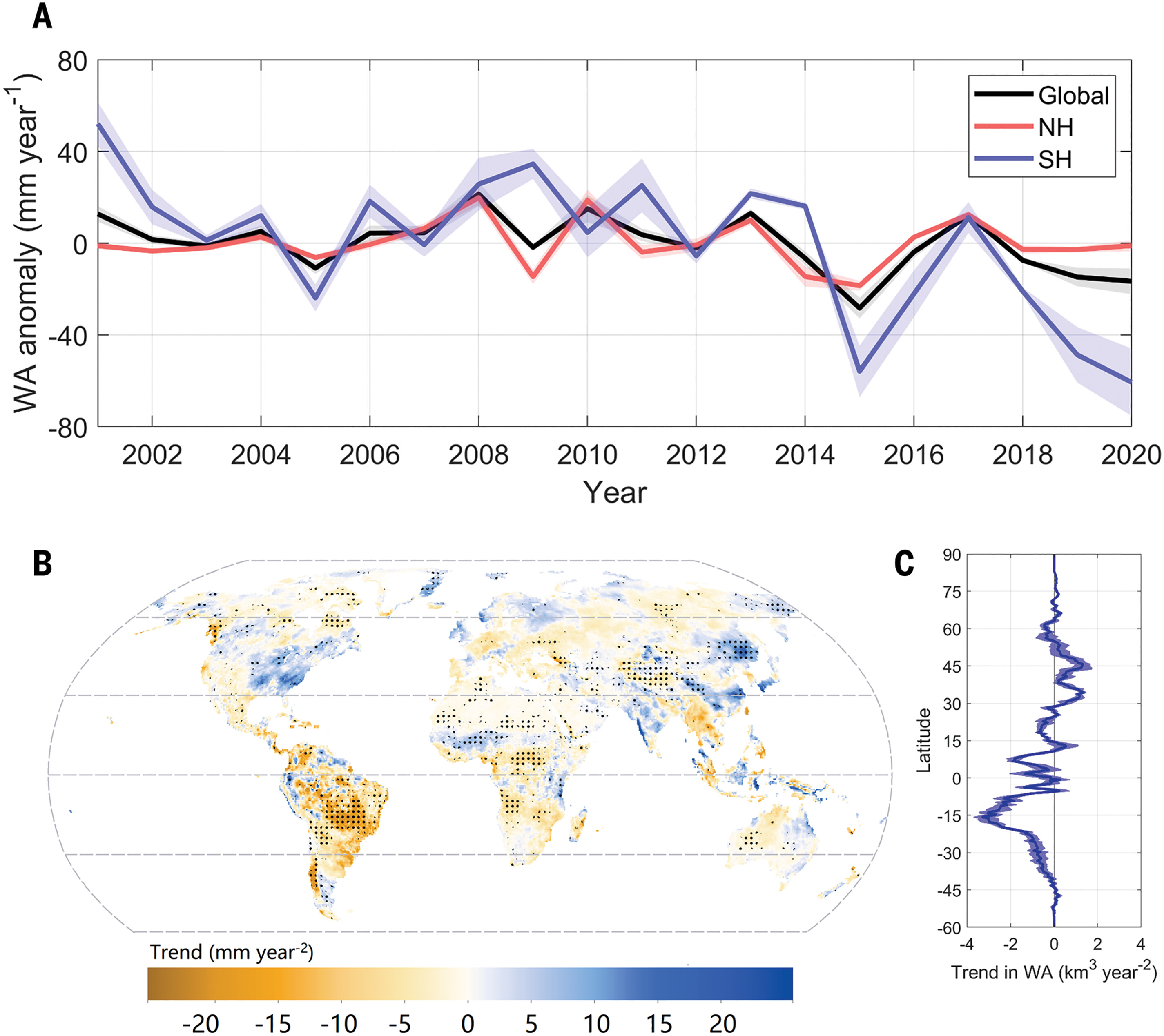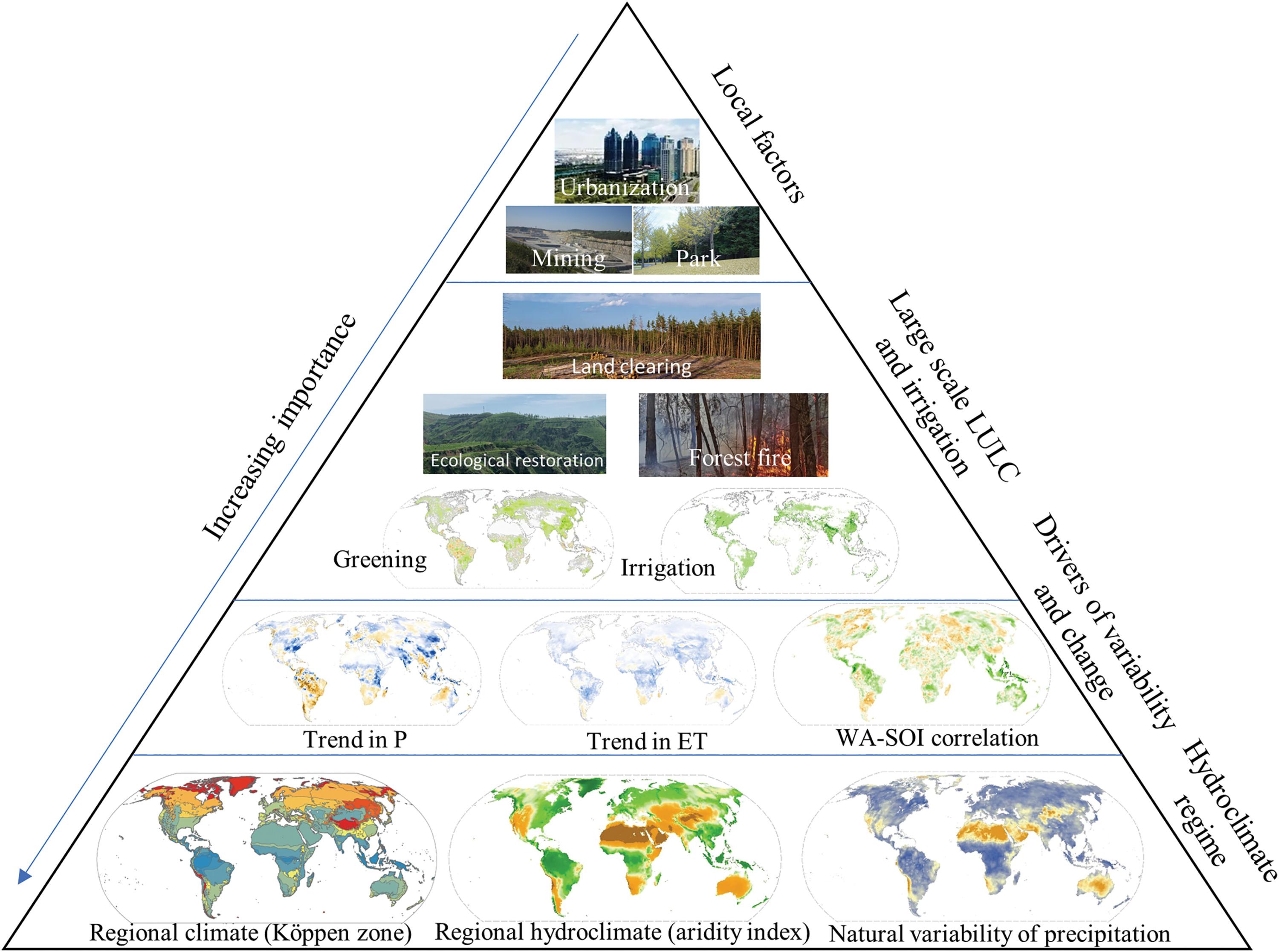文章来源:Zhang Yongqiang, Li Congcong, Chiew Francis HS, Post David, Zhang Xuanze, Ma Ning, Tian Jing, Kong Dongdong, Leung L. Ruby, Yu Qiang, Shi Jiancheng, Liu Changming. (2023). Southern Hemisphere dominates recent decline in global water availability. Science: 382: 579-584. https://doi.org/10.1126/science.adh0716
整理人:徐嘉苗,2021级本科生
整理时间:2024年6月5日
Abstract: Global land water underpins livelihoods, socioeconomic development, and ecosystems. It remains unclear how water availability has changed in recent decades. Using an ensemble of observations, we quantified global land water availability over the past two decades. We show that the Southern Hemisphere has dominated the declining trend in global water availability from 2001 to 2020. The significant decrease occurs mainly in South America, southwestern Africa, and northwestern Australia. In the Northern Hemisphere, the complex regional increasing and decreasing trends cancel each other, resulting in a negligible hemispheric trend. The variability and trend in water availability in the Southern Hemisphere are largely driven by precipitation associated with climate modes, particularly the El Niño-Southern Oscillation. This study highlights their dominant role in controlling global water availability.
摘要:全球陆地水资源支撑着生计、社会经济发展和生态系统。近年来,水资源可用性如何变化仍不清楚。我们利用观测数据集,量化了过去二十年全球陆地水资源的可用性。研究显示,从2001年到2020年,全球水资源可用性的下降趋势主要由南半球主导。显著的减少主要发生在南美洲、非洲西南部和澳大利亚西北部。在北半球,区域性的增减趋势相互抵消,导致半球趋势微不足道。南半球水资源可用性的变化和趋势主要受与气候模态相关的降水量驱动,特别是厄尔尼诺-南方涛动。本研究表明,这些气候模态在控制全球水资源可用性方面起着主导作用。

图 全球陆地水资源可用性的年际变化和趋势解析。
注:(A)全球陆地水资源可用性的年际变化特征;(B)近20年(2001-2020)全球陆地逐0.5°×0.5°网格的水资源可用性趋势分布特征;(C)陆地水资源可用性随纬度(逐0.5°)变化的分异特征。

图 控制全球水资源可用性主要因素的概念化图解
原文链接:https://science.org/doi/10.1126/science.adh0716
节选转引:https://mp.weixin.qq.com/s/w-F4LDsQ4ShN3y_Bbwu7Nw?poc_token=HFjEX2ajqnALkz0It_aWE7CciqK7IivPqr1imcWE